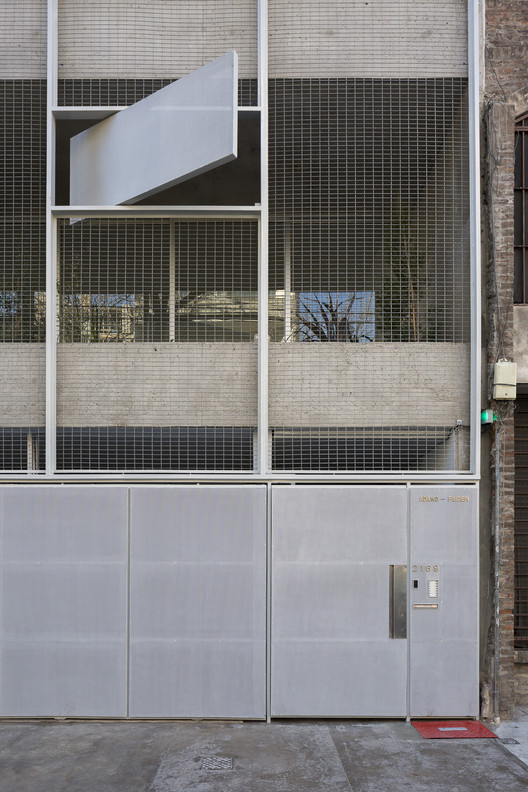Refuge En Terre Thibault Marcilly
2012-01-18 00:00
架构师提供的文本描述。这个避难所坐落在一片空旷的田野中间,远离城市,远离喧嚣,远离人群。它被设计成一个冥想的空间。一扇木门,一扇朝向天际线的窗户,以及天窗的照明是给避难所提供人类尺度的三大要素。在屋内,屋顶上覆盖着一扇有机玻璃窗,即使下雨,人们也可以坐在天窗下。有机玻璃的窗户稍微高一些,当人们在屋内生火时,雨水沿着西墙落下,烟从屋顶冒出来。
Text description provided by the architects. The refuge stands in the middle of an empty field, far from city, noise, and people. It is designed as a space for meditation. A wooden door, a window looking toward the skyline, and zenithal lighting are the three elements that give the refuge the human scale. Inside, the roof is covered with a plexiglass window, allowing people to sit under the skylight, even when it’s raining. The plexiglass window is slightly raised, allowing rain water to drop down along the west wall and smoke to come out of the roof when people make a fire inside.
领导这个项目的想法是用一种古老的技术制造一个简单的建筑。形状的设计是根据人类的规模,背景,和它必须建立的方式,几乎通过手工,并使用一些简单的工具。建筑技术与最终建筑之间仍有一个非常紧密的联系。材料是局部的,这是项目的一个重点。木材、粘土、稻草和水几乎都被从现场拿走了。建造工程花了八天。每天有两个人,周末有多达七个人在避难所工作。
The idea that led the project was to make a simple architecture with an old technique. The shape is designed according to the human scale, the context, and the way it had to be built, almost by hand, and with a few simple tools. A very strong link remains between the technique of construction and the final building. Materials are local, which is an important point of the project. Wood, clay, straw and water were almost taken from the site. The construction took eight days. Two people each day, and up to seven people in the weekend were working on the refuge.
作为一名建筑学的学生,建造这样一个项目是一种必不可少的经验。它意味着一个项目从草图到建筑,并面对你的想法到现实。最初的想法是几年前我在研究马里、非洲和南美洲的本土建筑时提出的。对我来说,将这些体系结构的简单性和效率引入到我的工作中是至关重要的。然后,我参观了一个在荷兰建造的小型展馆的学生项目,我认为是时候实现我的第一次直觉了。在这段时间里,这个项目有时间发展。2011年9月,这项工程在法国奥贝省我家的家乡进行。
Building such a project is an essential experience as a student in architecture. It means to make a project from sketches to construction, and to confront your thoughts to reality. The original idea came when I was studying vernacular architectures from Mali, Africa, and South America, a few years ago. It appeared essential to me to take the simplicity and the efficiency of these architectures and to bring them into my work. Then, visiting a student project of little pavilions built at the human scale in Netherlands, I thought it was time to achieve my first intuitions. The project had the time to evolve during this time. In September 2011, the construction took place in my family's native village, in the Aube department, France.
 举报
举报
别默默的看了,快登录帮我评论一下吧!:)
注册
登录
更多评论
相关文章
-

描边风设计中,最容易犯的8种问题分析
2018年走过了四分之一,LOGO设计趋势也清晰了LOGO设计
-

描边风设计中,最容易犯的8种问题分析
2018年走过了四分之一,LOGO设计趋势也清晰了LOGO设计
-

描边风设计中,最容易犯的8种问题分析
2018年走过了四分之一,LOGO设计趋势也清晰了LOGO设计




















































